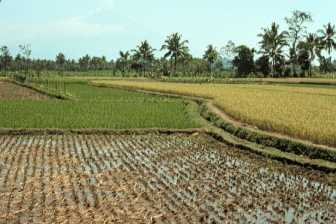Finance in Agriculture
|
IFAD(International Fund for Agricultural Development)IFAD's StrengthsSince it was created in 1978, IFAD has focused exclusively on rural poverty reduction, working with poor rural populations in developing countries to eliminate poverty, hunger and malnutrition; raise productivity and incomes; and improve the quality of their lives. The Fund has designed and implemented projects in very different natural, socio-economic and cultural environments. Many IFAD-supported programmes have been in remote areas, and have targeted some of the poorest and most deprived segments of the rural population. IFAD has recognized that vulnerable groups can and do contribute to economic growth. These groups have shown that they can join the mainstream of social and economic development, provided the causes of their poverty are understood and enabling conditions are created.In addition, its local-level operations in 114 countries keep IFAD in continuous and direct contact with the rural poor. Their perceptions of their own opportunities and constraints form the backbone of IFAD's knowledge base. This diversity of people and contexts has led to the accumulation of a valuable body of experience and knowledge. It has also required IFAD to maintain a highly flexible and participatory approach in responding to the specificities of rural development around the world. To build broad local ownership of the programmes it sponsors, IFAD works in partnership with others - borrowing-country governments, poor rural people and their organizations, and other donor agencies. Its focus on local development has given it a role in bridging the gap between multilateral and bilateral donors on the one side, and civil society represented by NGOs and community-based organizations (CBOs) on the other. Extensive partnerships and global engagement enable IFAD to strengthen its catalytic role. Through careful monitoring and evaluation of the impact of its projects, the Fund identifies successful innovations for possible replication and cross-regional fertilization. IFAD's flexible programme approach and longer-term lending framework enhance its ability to assist governments in pro-poor policy and institutional development and to respond to the diversity of issues facing the rural poor in different regional and local contexts. These processes require a long time frame to see the changes through to their conclusion. IFAD Strategic Framework for 2002-2006IFAD's activities are guided by the Strategic Framework for IFAD 2002-2006: Enabling the Rural Poor to Overcome Their Poverty. The framework's three strategic objectives are to:
All of IFAD's decisions - on regional, country and thematic strategies, poverty reduction strategies, policy dialogue and development partners - are made with these principles and objectives in mind. As reflected in the strategic framework, IFAD is committed to achieving the Millennium Development Goals, in particular the target to halve the proportion of hungry and extremely poor people by 2015. The Way AheadThe Strategic Framework for 2002-2006 reflects a degree of continuity for IFAD. It builds on the previous Strategic Framework for the period 1997-2001, the Action Plan 2000-2002, the Rural Poverty Report 2001, existing regional strategies, and the output of several internal IFAD working groups and task forces. Yet it also implies change. The Strategic Framework will increase demands on the Fund. These demands will have to be addressed by reviewing internal systems, procedures, structures and human resources, as well as regional strategies, to reorient them so that they can implement the new strategy effectively. In a changing and more challenging world, there is a strong need for IFAD to enhance staff skills, particularly in management, policy development, and communications. IFAD must strive to ensure that appropriate financial and human resources are at hand. The Sixth Replenishment of IFAD Resources will be crucial for this. |
|

